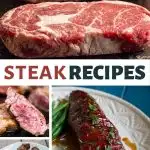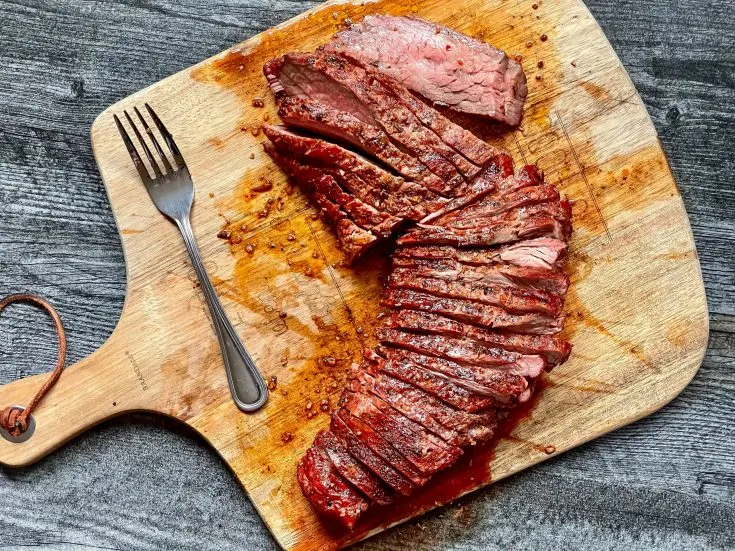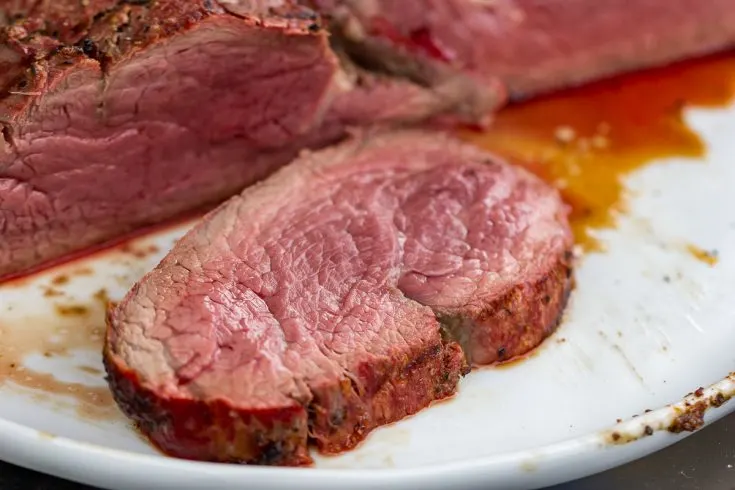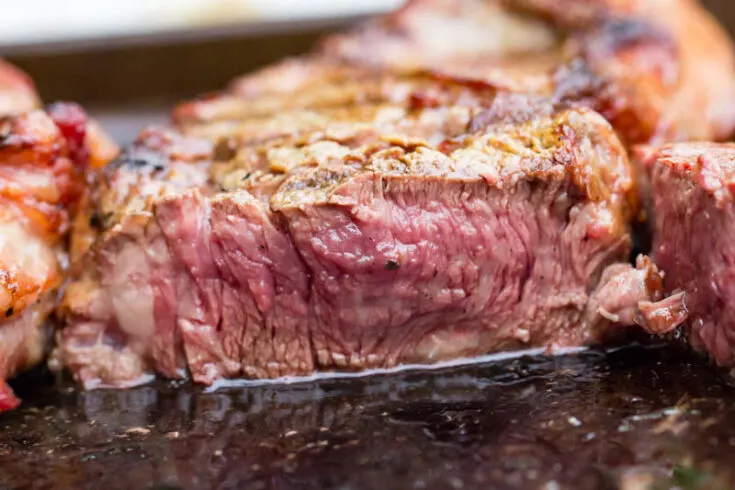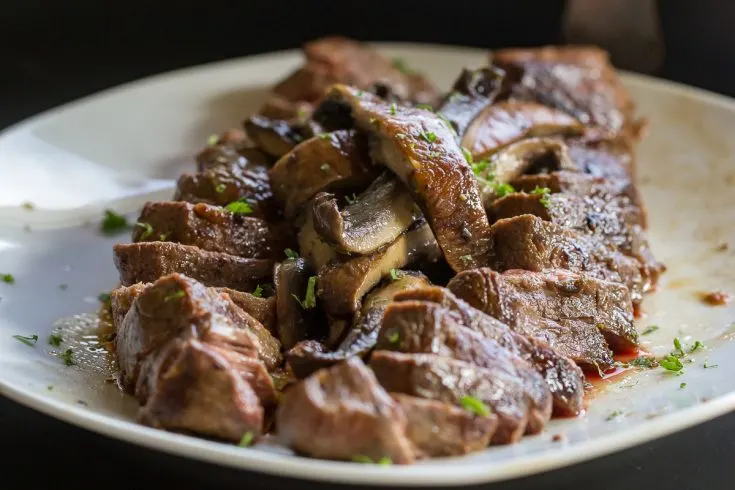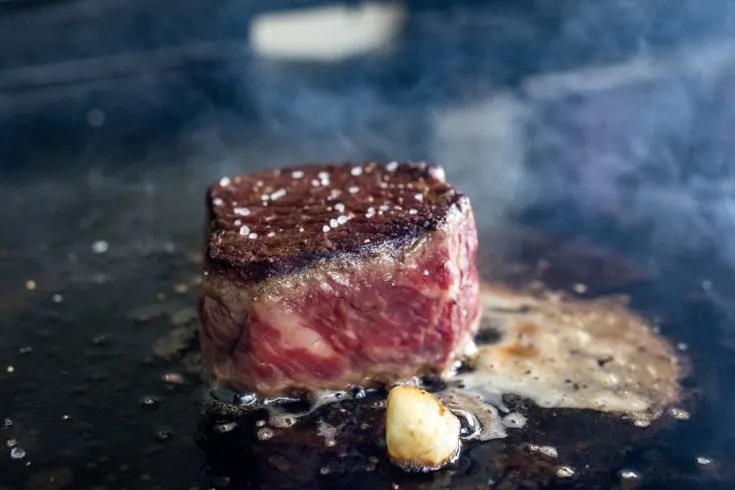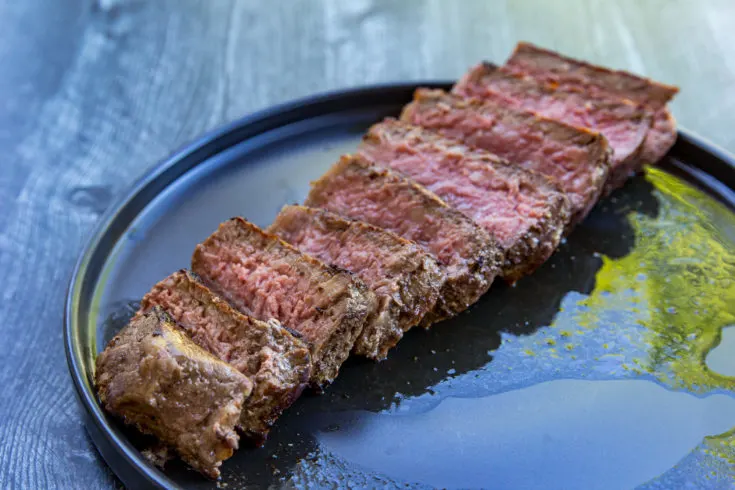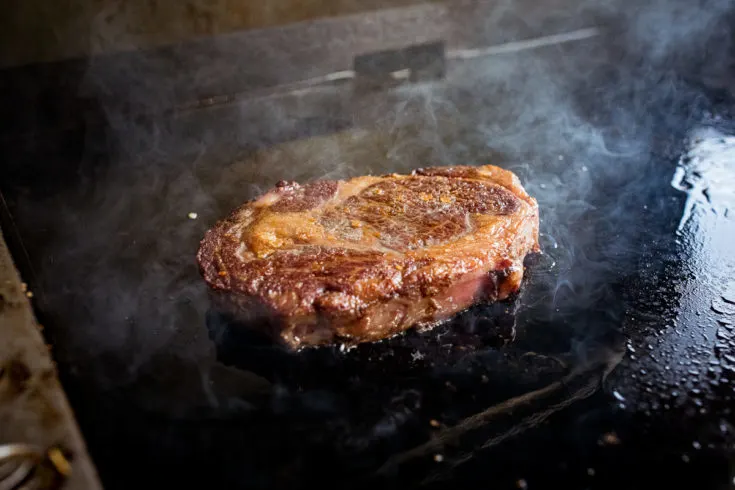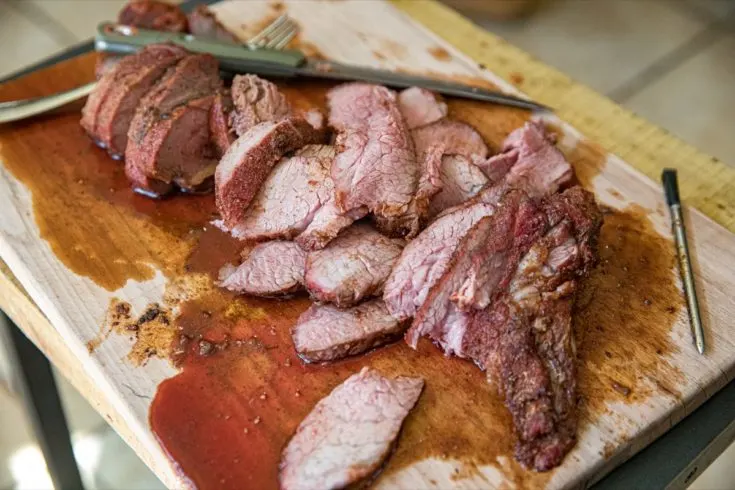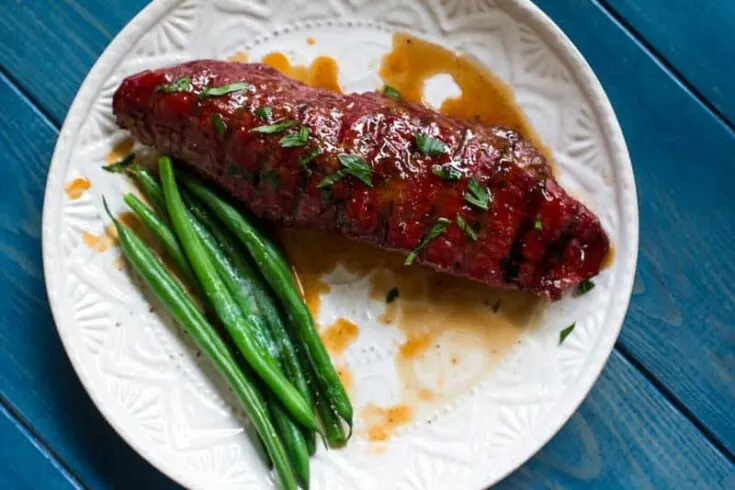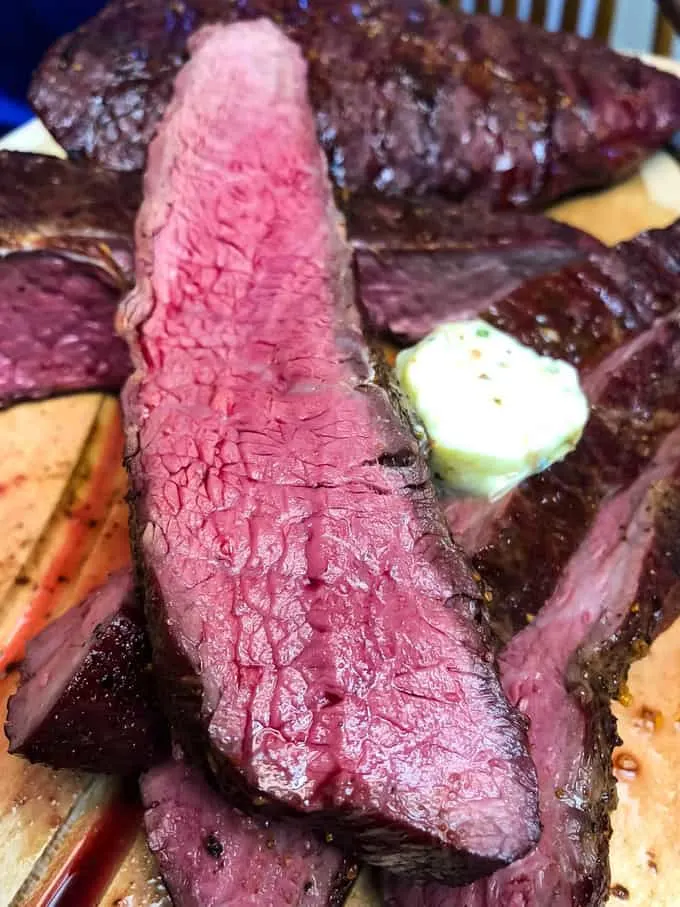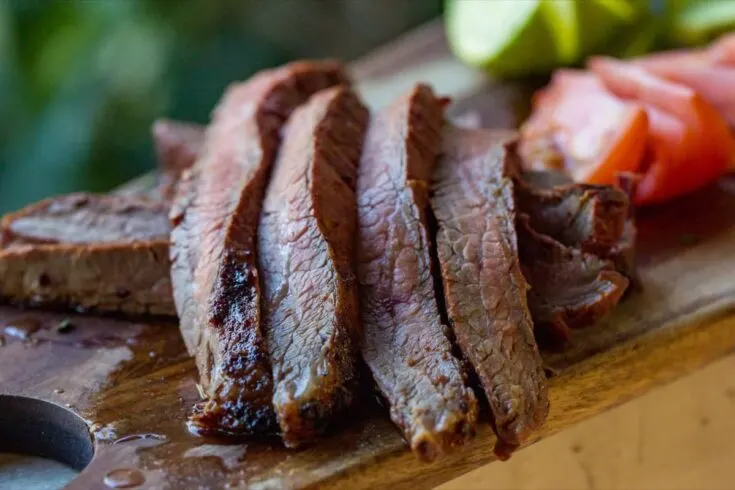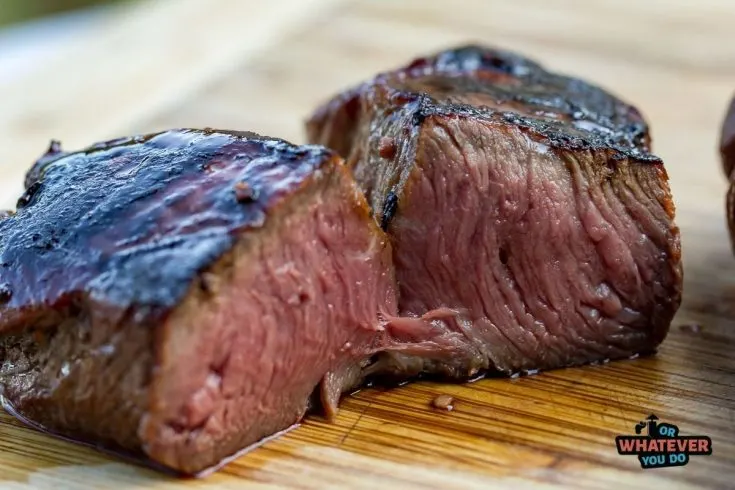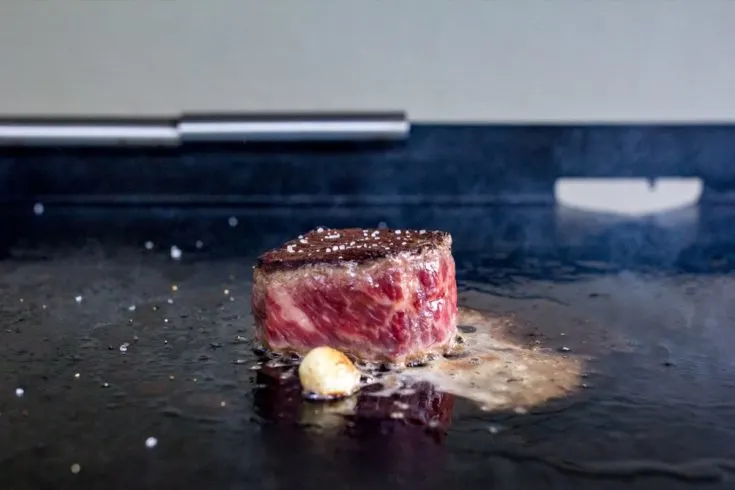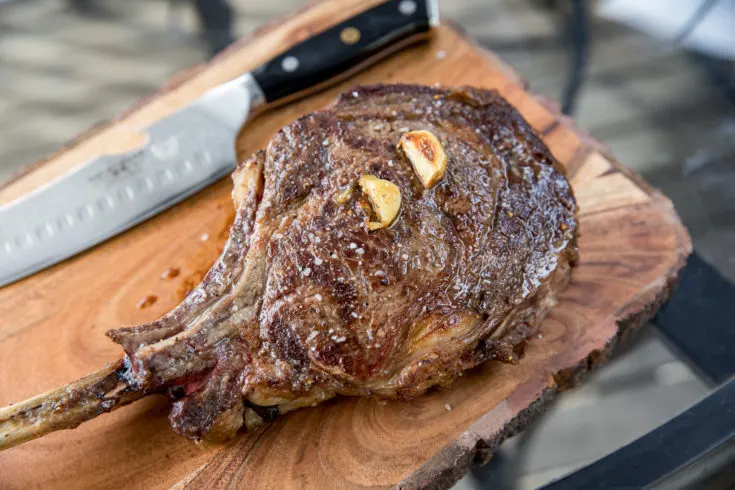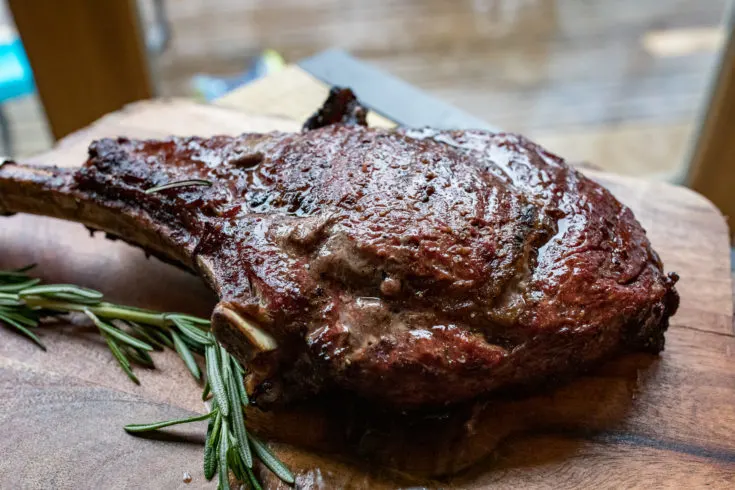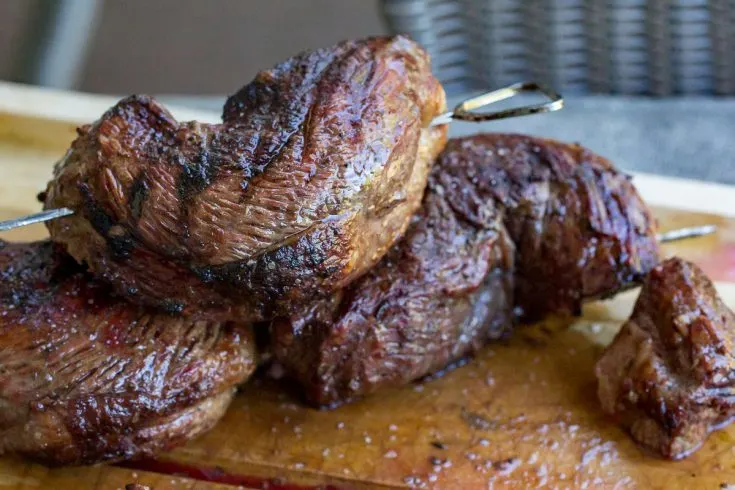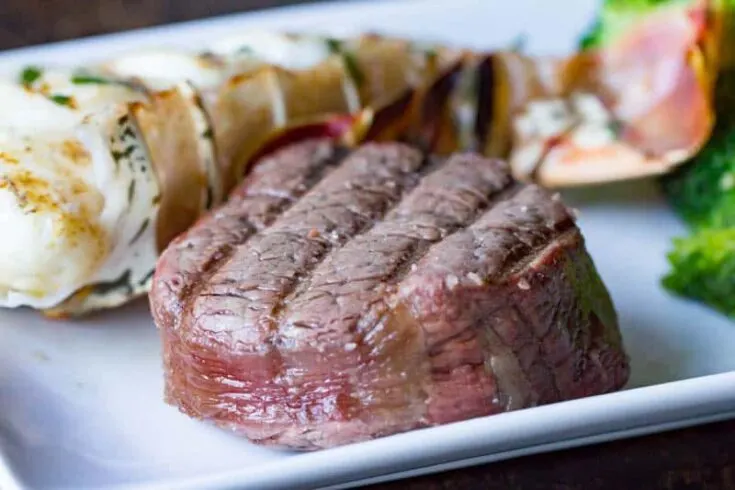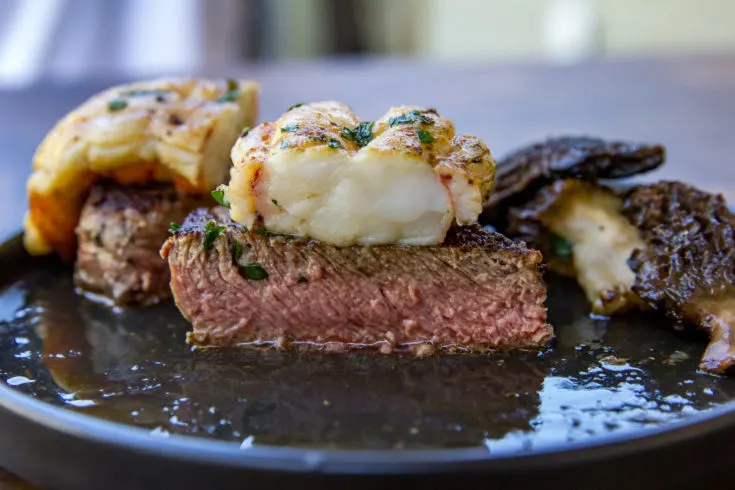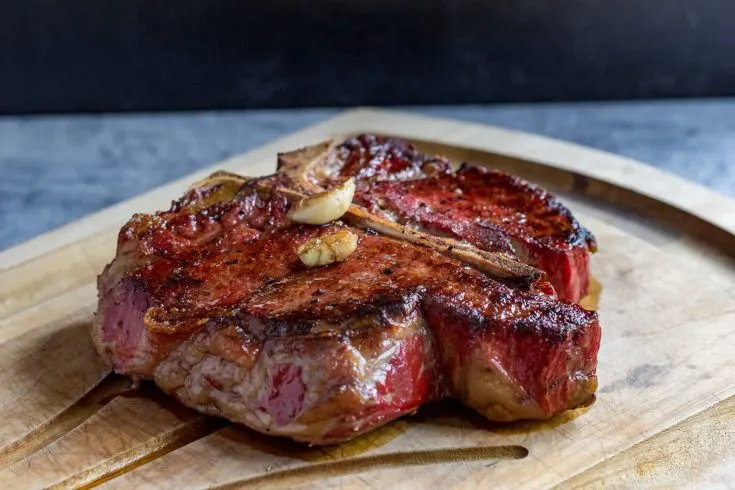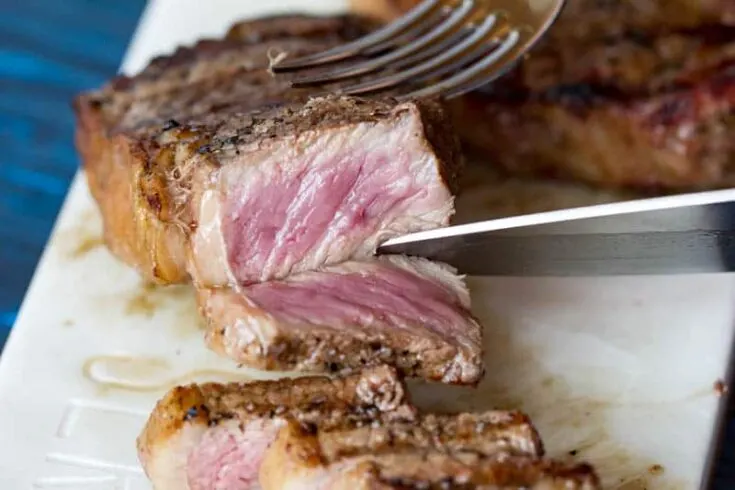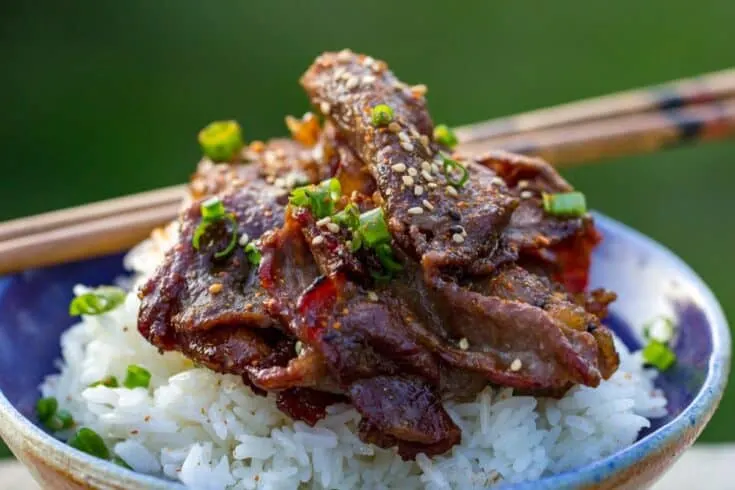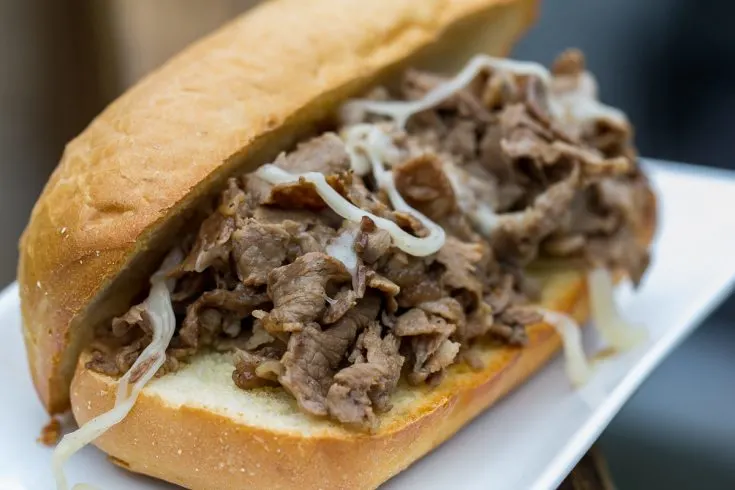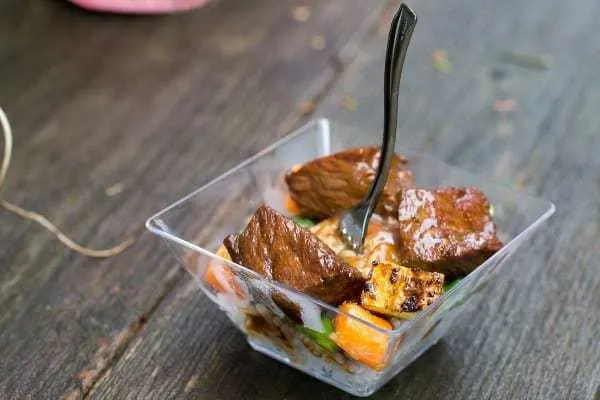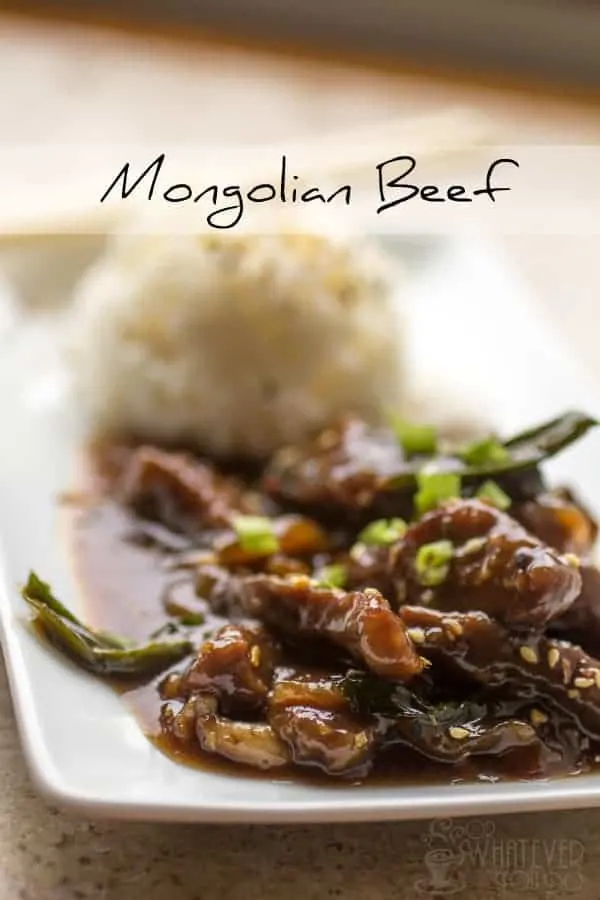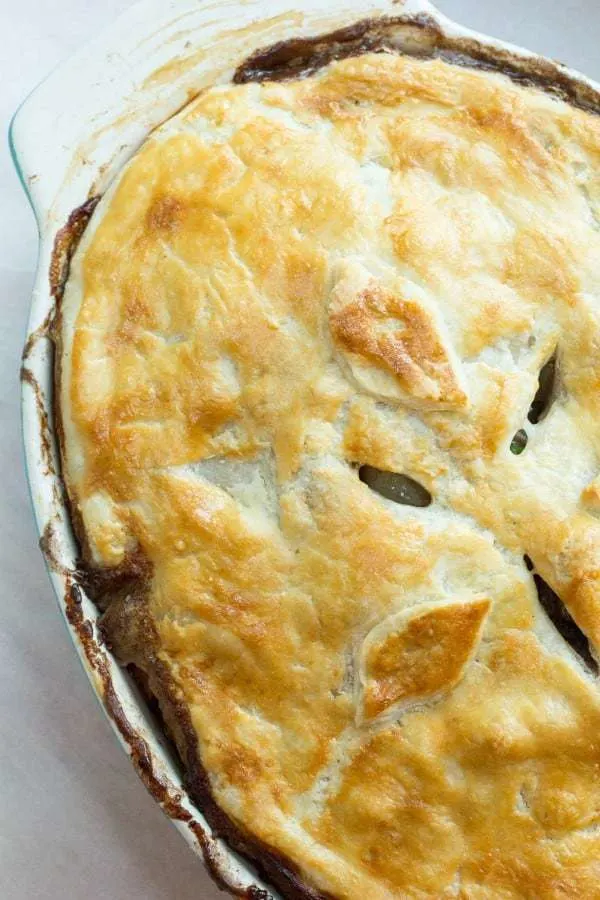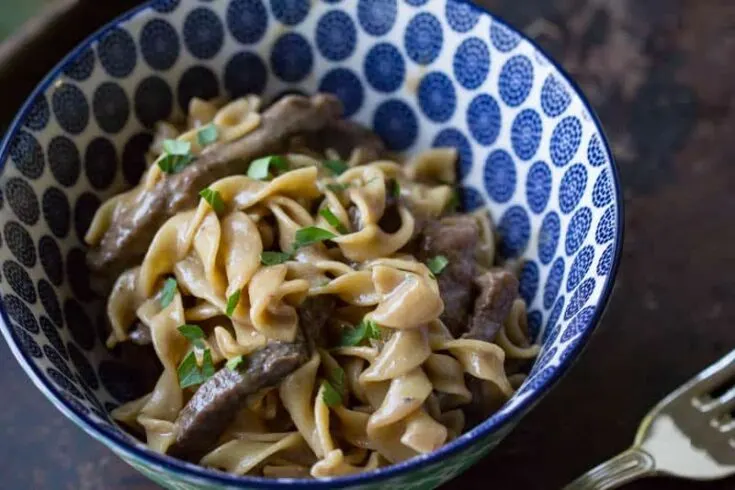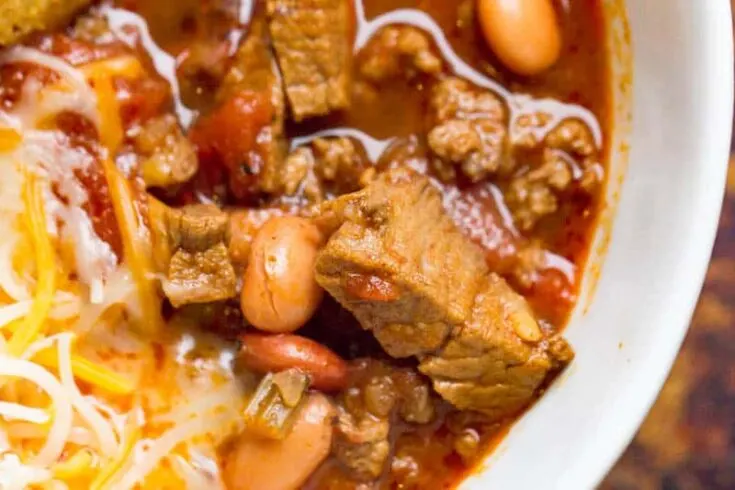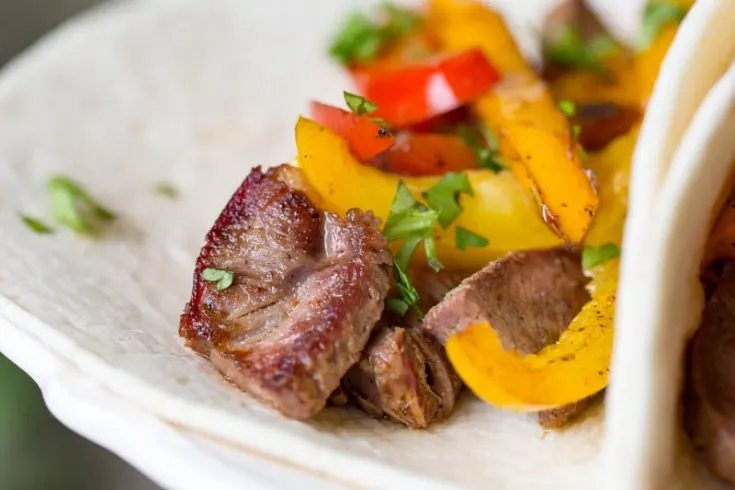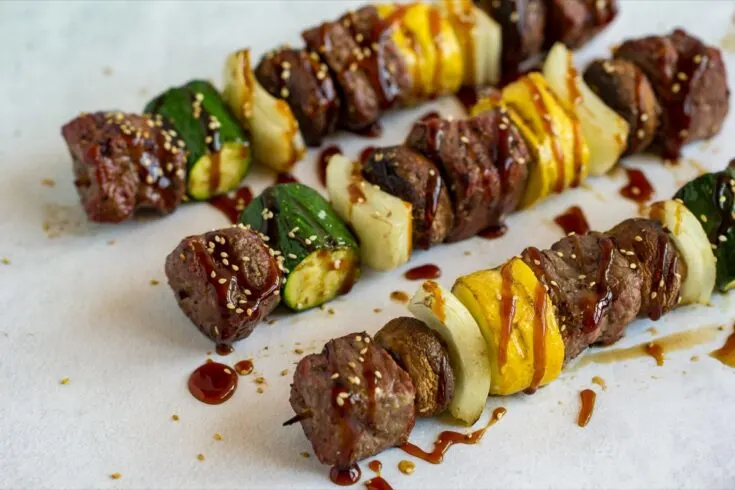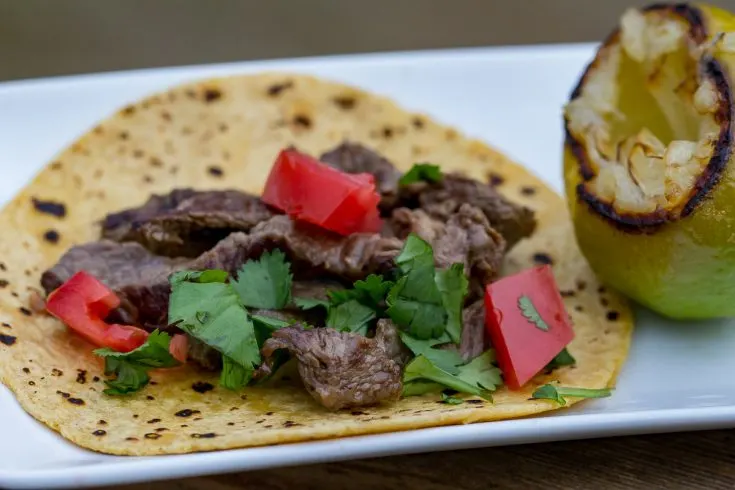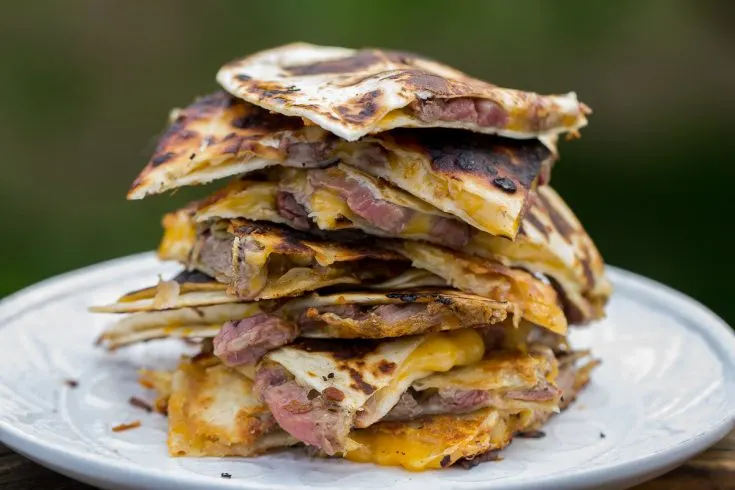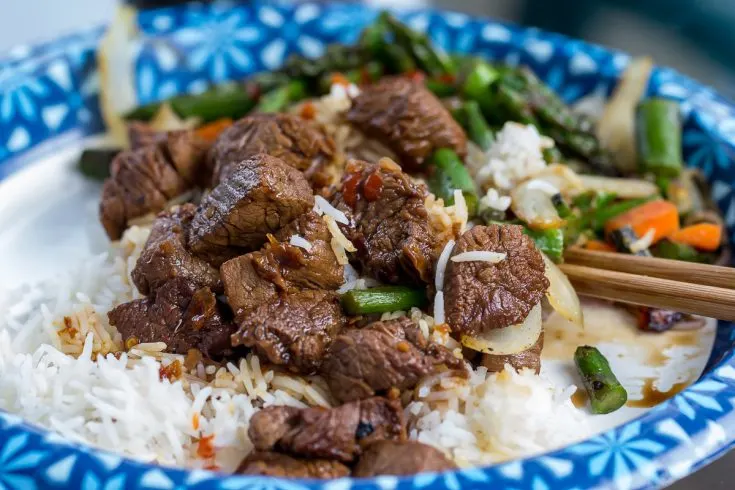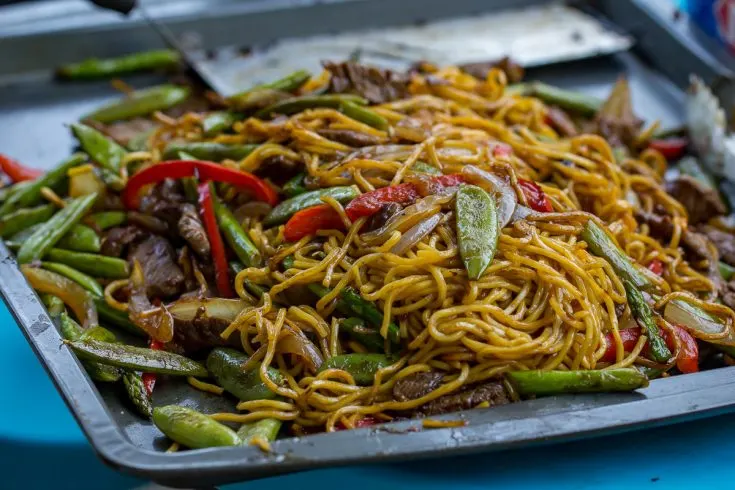We love steak, and there’s no easier way to make something that feels fancy but is actually so simple to do. You can master making a steak at home so easily! It isn’t as hard as you might think. Whether you’re cooking it in a pan, in the oven, on the grill, or on your gas griddle, you can make a perfect steak! Our collection of steak recipes is going to help you make the best steak you’ve ever had.
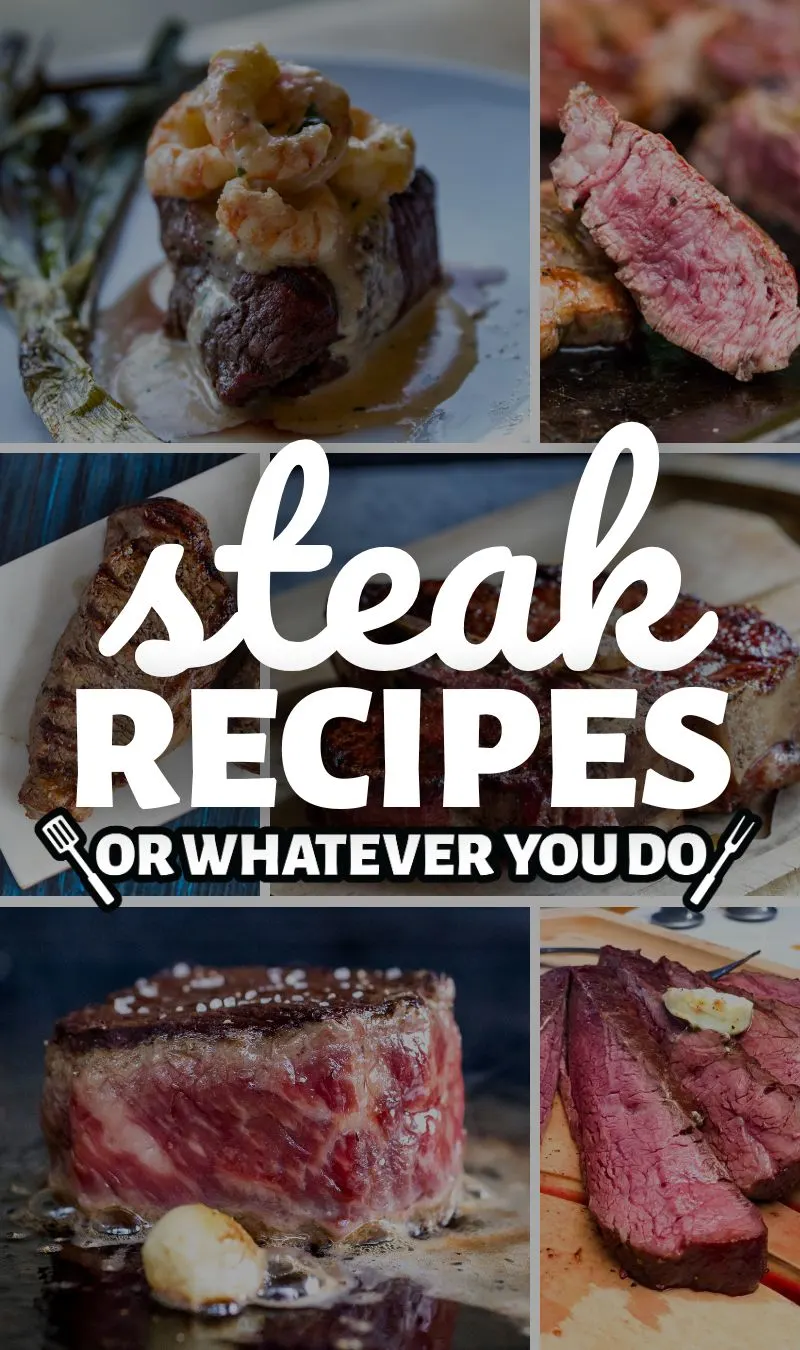
How to make the perfect steak
Making the perfect steak is simple! You only have ONE job. DO NOT OVERCOOK IT. We are steak purists here and don’t cook steak over medium rare, but you can perfect your steak just the way YOU like it, even if you want to go all the way to medium-well.
The chart below shows you what temperature you should remove your steak from your heat source in order to make sure the finished steak isn’t overcooked.
| STEAK TEMPERATURES | PULL | FINAL |
| RARE | 115° | 120° |
| MID-RARE | 125° | 130° |
| MEDIUM | 130° | 135° |
| MEDIUM-WELL | 135° | 140° |
| WELL | 140° | 145° |
Speaking of temperatures, in order to accurately gauge the temperature of your steak you need a lightning fast, accurate thermometer. We use ThermoWorks Thermapens around here, and they are reliable, durable, and ensure you’ll always have the perfect level of doneness in the finished product.

This is the best instant-read thermometer on the market, and I’ve tried a lot of them. Accurate and fast results, which is paramount when pellet grilling.
Choosing the right steak
A lot goes into choosing the right steak, but it doesn’t have to be difficult. Here is some information that breaks down the different types of steak and how to make sure you pick the best one you can.
- Filet Mignon (Beef Tenderloin): These are cut from the tenderloin part of the cow, which is a muscle that doesn’t see much activity, making it incredibly tender. These steaks are low in fat and have a mild flavor compared to other cuts. When selecting, look for a uniform shape to ensure even cooking.
- Ribeye: Cut from the rib section of the cow, Ribeye steaks are well-marbled with fat, which renders down during cooking and bastes the steak from within. This imparts a rich, buttery flavor. Look for a good distribution of marbling throughout, but avoid those with large pieces of exterior fat or gristle.
- New York Strip (Top Loin, Kansas City Steak): Coming from the short loin behind the ribs, this steak is known for its good balance of tenderness and robust flavor. It has less marbling than a ribeye but is leaner and often a bit cheaper. Look for steaks that are thick and evenly cut with a good amount of marbling.
- T-Bone: This steak is named for the T-shaped bone that divides two different kinds of meat: the New York strip and a piece of tenderloin. It offers a taste of both worlds – the tenderness of the tenderloin and the rich flavor of the strip. When choosing, find one with a large portion of both kinds of meat.
- Porterhouse: A larger version of the T-bone steak, the Porterhouse contains a greater amount of tenderloin. Choose one with a good amount of tenderloin attached and thick enough that it doesn’t overcook easily.
- Sirloin: This cut comes from the back of the cow, continuing off the short loin. It’s leaner, can be a bit tougher, but is still quite flavorful. Look for sirloins with a deep, uniform color and some marbling.
- Flank: This long and flat cut is from the abdominal muscles of the cow. It has long fibers and is quite lean, which can make it tough if not cooked properly. Choose one that has a bright red color and is not too thick. This is a great cut for marinating!
- Skirt: Skirt steak, from the plate (the front of the belly), is known for its robust flavor. It’s a long, thin cut with coarse fibers and needs to be sliced against the grain for tenderness.
- Hanger: Known as the “butcher’s secret,” hanger steak hangs between the rib and the loin. It has a rich, full flavor and should be cooked quickly over high heat.
- Flat Iron (Top Blade): This steak is cut from the shoulder and has a lot of marbling, leading to great flavor and tenderness. Look for uniform thickness and size for even cooking.
In general, when selecting steaks, here are a few tips:
- Marbling: Look for good marbling (the white streaks of fat in the meat), as this will render down during cooking and provide flavor and juiciness.
- Color: The steak should be a bright cherry-red color. If it’s turning brown or has dark spots, it’s likely past its prime.
- Thickness: Thicker steaks are usually better because they allow for a nice crust on the outside while still reaching the desired level of doneness inside.
- Uniformity: A uniform thickness throughout will ensure the steak cooks
What cuts of steak are best if you like steak medium-well?
This isn’t something I necessarily recommend because I don’t think ANY steak is at its best cooked to this temperature, but everyone’s tastes are different and steak isn’t just for those of us who like it pink in the middle. If you have a guest or you yourself want a steak that’s a little more done, consider the following!
In general, cuts with higher fat content and marbling tend to hold up better when cooked to medium-well or well-done, as the fat renders out and keeps the meat moist. Lean cuts can become dry and tough if overcooked, so they’re often better suited to being cooked rare to medium. Always remember that every steak is different, and cooking times and temperatures may vary based on the specific piece of meat and your personal preference. Ribeyes and New York Strips tend to hold up pretty well, as does a well-marbled flat iron.
Our Steak Recipes collection
Below you’ll find all of the steak recipes on Or Whatever You Do! Every cut you can imagine, as well as recipes that use steak in them. There’s something for everyone and every skill set here, so dive in!
Steak Recipes
Where's the beef? Right here. All of it you could possibly want.
Traeger Tri-Tip is an easy barbecue recipe that you can make for dinner, any night of the week. This delicious cut of beef is tender and juicy and cooked medium-rare.
Traeger Smoked Beef Tenderloin is easy to make but ultra impressive to serve.
This is Traeger Ribeye is cooked right on the pellet grill. Instructions included here are for both a traditional sear and a reverse sear. Choose your own adventure, as long as it includes Berta beef, s&p, 4 minutes a side, down the hatch.
Our Blackstone Top Sirloin Cap Steak is tender, delicious, and SO easy to cook! Break out the butter and a little S&P and fire up that griddle!
These delicious Manhattan Filets are from American Wagyu cattle and is the most tender, delicious steak I've ever had!
This popular steak is simple to cook perfectly right on your Blackstone Griddle! Find out our simple method here.
Cooking steak is one of the easiest things to master in the kitchen. In this recipe we're going to walk you through how to make a perfectly cooked American Wagyu Ribeye, but you can apply this method to any cut of steak you happen to have on hand.
This delicious beef roast is gaining popularity and once you try it, you'll see why! I'm going to walk you through cooking the perfect tri tip, no matter HOW you decide to make it!
This Traeger grilled hanger steak is not only one of my favorite cuts of beef, but also one of my favorite ways to cook steak, period. This cut is much more economical than tenderloin, but nearly matches it in flavor and tenderness.
These reverse seared flank steaks are tender, juicy, and perfectly cooked because of the reverse sear method.
Tender steak is marinated and quickly grilled to a perfect medium-rare, and then served with warm tortillas and all of the fixings.
Tender flat iron steaks are smoked and then seared for the perfect steak. Marinade them for an extra kick of flavor, or skip it and let the beef really shine through.
Blackstone Griddle Steak is a super simple main course that is done is less than 15 minutes, and anyone can master.
This popular steak is simple to cook perfectly right on your Blackstone Griddle! Find out our simple method here.
The Cadillac of steaks, a tomahawk is not only impressive to serve, it is also one of the best steaks out there.
Pellet Grill Picanha made on our Traeger grill! This steak is delicious, and we can't get enough of the tender, bold beef flavors that come through. The pellet grill is the perfect tool to cook this with!
These delicious filet mignons are quickly grilled on the Traeger wood-pellet grill, and then served hot with your favorite sides!
Treat yourself and/or someone you love to a fancy restaurant-quality meal right at home! Tender, beefy filet mignon. Buttery lobster tail right on top. Your person is going to be super impressed.
A giant 2-inch-thick T-bone steak is smoked and then seared for one of the best steaks you've ever had.
This flavorful and tender New York Strip is cooked on the grill after being seasoned simply with salt and pepper.
Recipes using steak
This simple Korean BBQ dish cooks in less than 30 minutes, and doesn't have a bunch of crazy ingredients that you don't have access to or can't easily obtain. WIN WIN. You need to try this.
Delicious homemade Philly Cheesesteaks are not only possible, but they are easy when you've got a Blackstone! Gas griddles are one of the ultimate cooking tools to get restaurant-quality food at home.
These simple breakfast sandwiches are easy to make for a crowd and so delicious!
These steak bites are awesome!
Delicious Mongolian Beef recipe that is easy, and totally satisfying.
Hearty, delicious, and beautiful steak and potato pie! This is one of my favorite fall and winter dishes.
Easy, delicious comfort food! Tender beef in a rich sour cream sauce over a bed of egg noodles. Use the best cut of beef you can buy, and take care not to overcook!
This easy steak chili uses that prime rib you couldn't quite finish up or those extra steaks! If you don't have enough, just fill in the gap with some ground beef and you'll have a delicious dinner that
These easy steak fajitas are reverse seared before getting blasted with heat in a cast-iron pan along with some peppers and onions to make the best fajitas you've ever had.
Easy grilled steak kabobs are skewered and cooked on the pellet grill and then drizzled with a spicy teriyaki and topped with crunchy sesame seeds.
These Blackstone Steak Tacos are a quick, easy, and delicious way to do street tacos at home!
Quesadillas are best cooked on a flat top griddle! My Blackstone Steak Quesadillas use leftover steak and turns it into something amazing. Easy, filling, and kid-approved dinner idea!
Tender pieces of steak are marinated in a soy, pineapple, and garlic sauce that also becomes the sauce for the dish!
This delicious steak teri-yakisoba is a stir fry with tons of onions, bell peppers, pea pods, and fresh yakisoba noodles. Super quick and easy dinner option!

